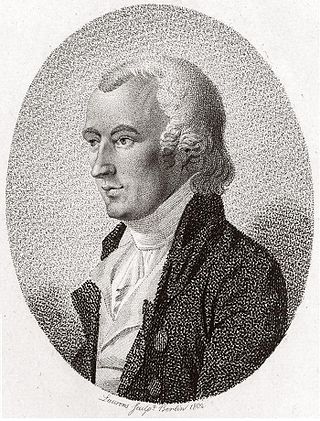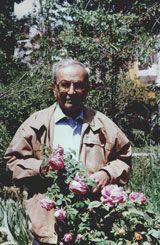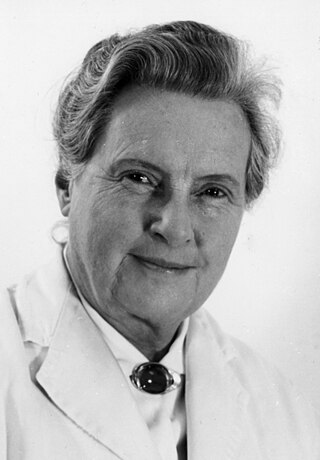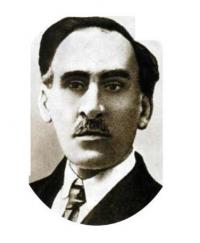
Carl Ludwig Willdenow was a German botanist, pharmacist, and plant taxonomist. He is considered one of the founders of phytogeography, the study of the geographic distribution of plants. Willdenow was also a mentor of Alexander von Humboldt, one of the earliest and best known phytogeographers. He also influenced Christian Konrad Sprengel, who pioneered the study of plant pollination and floral biology.
Lilian Suzette Gibbs (1870–1925) was a British botanist who worked for the British Museum in London and an authority on mountain ecosystems.

Alice Eastwood was a Canadian American botanist. She is credited with building the botanical collection at the California Academy of Sciences in San Francisco. She published over 310 scientific articles and authored 395 land plant species names, the fourth-highest number of such names authored by any female scientist. There are seventeen currently recognized species named for her, as well as the genera Eastwoodia and Aliciella.

Nikolai Stepanovich Turczaninow was a Russian botanist and plant collector who first identified several genera, and many species, of plants.

The flora of Western Australia comprises 10,842 published native vascular plant species and a further 1,030 unpublished species. They occur within 1,543 genera from 211 families; there are also 1,335 naturalised alien or invasive plant species more commonly known as weeds. There are an estimated 150,000 cryptogam species or nonvascular plants which include lichens, and fungi although only 1,786 species have been published, with 948 algae and 672 lichen the majority.

Turhan Baytop was a Turkish botanist and pharmacist from Istanbul.

Anna Amelia Mauve was a South African botanist who worked at the Botanical Research Institute in Pretoria. She catalogued more than 4,000 plant specimens from the Kalahari and Soutpansberg regions. She made major contributions to the journals Flowering Plants of Africa and Bothalia.
Colchicum baytopiorum is a plant species native to western Turkey and to the Greek island of Rhodes. It has small, bright pink-purple flowers measuring 4 cm (1.5") across. It is unusual in the genus in producing small leaves in autumn while in bloom, as opposed to producing leaves in spring. It has a chromosome number of 46, 54 or 108. The species was named in honor of Turkish botanist Asuman Baytop.

Mary Katharine Brandegee was an American botanist known for her comprehensive studies of flora in California.
Georgia Mason was a botanist at the University of Oregon and author of Guide to the Plants of the Wallowa Mountains of Northeastern Oregon, and Plants of Wet to Moist Habitats in and Around Eugene Oregon.
Allium baytopiorum, or Baytop's onion, is a species of onion that is endemic to Kars Province in Turkey. It is found in montane steppe at about 1,200m elevation. The species was named in honor of Turkish botanist Asuman Baytop.

Aleksandr Vasiljevich Fomin (1869-1935) was a botanist. He studied ferns and seed plants. He was also a director of the Kiev University Botanical Garden; which was renamed after him, when he died. He was a subject of the Russian Empire and later the Soviet Union.

Rose Eudora Collom was an American botanist and plant collector. She was the first paid botanist of the Grand Canyon National Park. She discovered several plant species, some of which were named in her honor, and collected numerous plant specimens.
The following lists events that happened in 2015 in Turkey.

Iris junonia is a plant species in the genus Iris, it is also in the subgenus Iris. It is a rhizomatous perennial, from Cilicia, within the Taurus Mountains. It has glaucous short leaves, tall stems with several branches, numerous flowers in various colours from blue-purple, lavender, pale blue, cream, white and yellow, with brown veining and white tipped orange beards. It is cultivated as an ornamental plant in temperate regions. Its status is still unclear, if it is a synonym of Iris germanica or a separate species.
Iris purpureobractea is a plant species in the genus Iris, it is also in the subgenus Iris. It is a rhizomatous perennial, from the cliffs and forest glades on the mountains of Turkey. It has straight or falcate shaped leaves, stem with several branches, the stem has purple spathes, it has up to 8 fragrant flowers, in various colours between yellow or blue. It is cultivated as an ornamental plant in temperate regions.

Frances Perkins Andrews Shepard was an American physician who worked as a missionary and university lecturer in Turkey. As a woman she was not permitted to work as a physician, but could work as a nurse and midwife, and lecture in medical botany at the Medical Department of the Central Turkey College. She also assisted widows and orphans to support themselves by enabling them to sell goods they crafted. She made a scientifically significant botanical collection in and around the area where she lived, sending these specimens to George Edward Post, thus assisting with his publication The Flora of Syria, Palestine and Sinai. Her collection is held in the Herbarium of the American University of Beirut, and her type specimens are held at Conservatory and Botanical Garden of the City of Geneva.

Crocus baytopiorum is a species of flowering plant in the genus Crocus of the family Iridaceae. It is a cormous perennial native to Turkey.

Emma Jane Cole was an American teacher, botanist, and curator, and the author of Grand Rapids Flora: A Catalogue of the Flowering Plants and Ferns Growing Without Cultivation in the Vicinity of Grand Rapids, Michigan. She was inducted into the Michigan Women's Hall of Fame in 2007.













